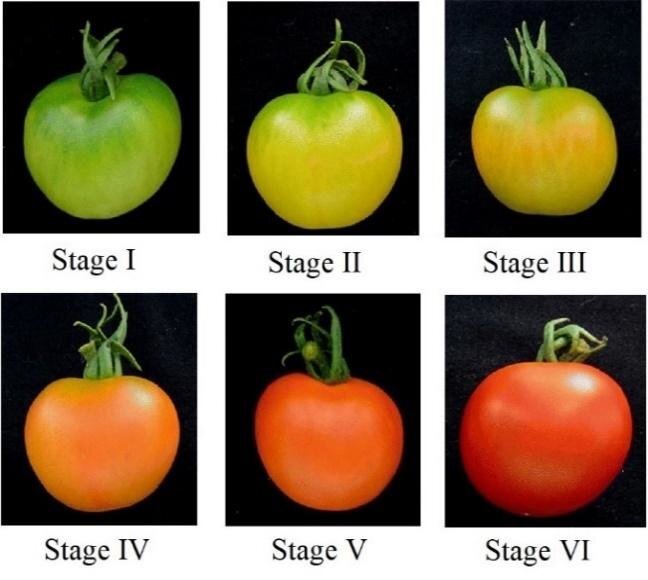Tomatoes, the quintessential fruit that is both beloved for its versatile culinary uses and for its nutritional benefits, are a staple in many households. However, there often arises a quandary when it comes to the ripening process of these vibrant red fruits – will tomatoes ripen off the plant? This question has puzzled gardeners and amateur botanists alike, leading to a quest for knowledge about the ripening journey of tomatoes. In this article, we will explore the fascinating world of tomato ripening, examining the factors that influence it and whether it can occur away from its mother plant. Prepare to unravel the mysterious ways in which tomatoes transform from green and unripe to succulent and enticing, as we delve into the science behind their ripening process.
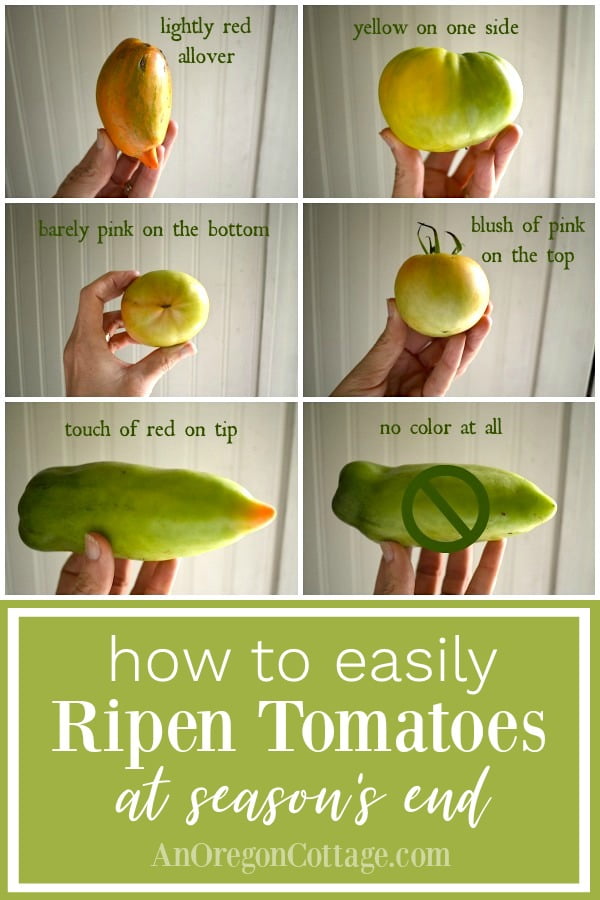
Factors Affecting Tomato Ripening
Temperature
Temperature plays a crucial role in tomato ripening. Tomatoes are sensitive to extreme temperatures, with their optimal ripening range being between 68 to 77 degrees Fahrenheit (20 to 25 degrees Celsius). Temperatures that are too low can hinder the ripening process, while high temperatures can cause tomatoes to overripen and lose flavor. It is important to provide a stable and moderate temperature for optimum tomato ripening.
Ethylene Production
Ethylene is a natural plant hormone that is instrumental in the ripening of fruits, including tomatoes. As tomatoes ripen, they produce ethylene gas, which acts as a signal for further ripening. Ethylene promotes the conversion of starches to sugars, leading to the characteristic sweetness of ripe tomatoes. Factors such as temperature, humidity, and the presence of other ripening fruits can influence ethylene production and affect the ripening process.
Sunlight Exposure
Sunlight is a critical factor in tomato ripening. Tomatoes require exposure to ample sunlight to ripen properly. Sunlight stimulates the production of chlorophyll, which gives tomatoes their red color. Additionally, sunlight aids in the synthesis of sugars, enhancing the taste and sweetness of ripe tomatoes. It is important to ensure that tomato plants receive adequate sunlight throughout the day for optimal ripening.
Humidity Levels
Humidity levels can greatly impact the ripening of tomatoes. High humidity can create a favorable environment for the growth of molds and fungi, leading to spoilage of the fruit. On the other hand, low humidity levels can cause tomatoes to shrivel and lose moisture. Maintaining an optimal humidity range of around 85% can help facilitate the ripening process and ensure the quality of the tomatoes.
Nutrient Availability
The availability of essential nutrients is crucial for tomato ripening. Tomatoes require a balanced supply of nutrients, including nitrogen, phosphorus, and potassium, to support their growth and development. Adequate nutrient availability promotes healthy fruit development and ripening. It is important to provide sufficient nutrients through proper soil preparation and regular fertilization to ensure optimal tomato ripening.
Harvesting Tomatoes
Determining Tomato Ripeness
Determining the ripeness of tomatoes is vital to achieve the best flavor and quality. Several indicators can help in assessing tomato ripeness. The most apparent sign is the color change, as ripe tomatoes transition from green to their characteristic vibrant red (or other specific colors depending on the variety). Additionally, ripe tomatoes are firm yet slightly yielding to gentle pressure. A sweet and distinct tomato aroma is another sign of ripe tomatoes. By paying attention to these indicators, you can ensure that you harvest tomatoes at their peak ripeness.
Harvesting Techniques
Proper harvesting techniques are essential to avoid damaging the tomatoes and preserve their quality. When harvesting tomatoes, it is advisable to use sharp and clean pruning shears or scissors to cut the stem just above the fruit. This method prevents excessive force that may lead to bruising or tearing of the fruit. It is important to handle tomatoes with care to minimize damage and maintain their integrity.
Handling Red-Green Tomatoes
Sometimes, tomatoes may be harvested when they are still partially green. To ripen such tomatoes effectively, it is important to handle them with care. It is recommended to gently place them in a single layer on a soft surface, such as newspaper or a towel. Avoid stacking or overcrowding green tomatoes, as this can lead to increased pressure and potential damage. Additionally, ensure that the environment has appropriate temperature, humidity, and ethylene levels to support the ripening process.
Using Ethylene to Promote Ripening
Ethylene can be utilized to accelerate the ripening of tomatoes off the plant. One method is to place ripe tomatoes in close proximity to green or partially ripe tomatoes. The ethylene gas released by the ripe tomatoes will help stimulate the ripening process in the green ones. Alternatively, ethylene can be introduced artificially by using ethylene generating products, such as ethylene gas-emitting sachets or ethylene powder. These methods can effectively promote the ripening of green tomatoes.

Ripening Tomatoes Off the Plant
Room Temperature Ripening
One of the simplest methods to ripen tomatoes off the plant is to place them at room temperature. This method works best when the tomatoes are already partially ripe or have started to show signs of color change. By keeping the tomatoes in a well-ventilated area with a stable temperature around 68 to 77 degrees Fahrenheit (20 to 25 degrees Celsius), they will gradually ripen over the course of several days to a week.
Paper Bag Method
The paper bag method is a popular technique for ripening tomatoes quickly. This method involves placing the tomatoes in a paper bag and folding the top to create a sealed environment. The bag traps the ethylene gas produced by the tomatoes, which accelerates the ripening process. Additionally, the bag helps to maintain humidity, which is beneficial for ripening. Check the tomatoes daily to monitor their progress and ensure they do not overripen.
Ripening with Ripening Bananas
Ripening tomatoes with ripe bananas can expedite the ripening process. Bananas emit a significant amount of ethylene gas, which can influence the ripening of nearby fruits, including tomatoes. To ripen tomatoes using bananas, place the tomatoes and ripe bananas in a closed container, such as a paper bag or lidded container. The ethylene gas released by the bananas will help stimulate the ripening of the tomatoes. Monitor the tomatoes regularly to avoid overripening.
Using Ethylene Gas
Ethylene gas can be used to ripen tomatoes efficiently. Ethylene gas generators are available in the market and can release controlled amounts of ethylene gas to facilitate ripening. Place the green or partially ripe tomatoes in a container or enclosed space with the ethylene gas generator. The ethylene gas will encourage the tomatoes to ripen faster. It is crucial to follow the manufacturer’s instructions for safe and effective use.
Ripening in a Cardboard Box
Another method for ripening tomatoes is using a cardboard box. Line the bottom of the box with newspaper or a soft layer to cushion the tomatoes. Place the tomatoes in a single layer, making sure they do not touch or overlap. Close the box and store it in a well-ventilated area with a stable temperature. Inspect the tomatoes regularly to monitor their ripening progress and remove any overripe fruits to prevent spoilage.
Storing Ripened Tomatoes
Refrigeration
Once tomatoes have ripened to your desired level, refrigeration can help extend their shelf life. However, refrigeration can also affect the flavor and texture of tomatoes, making them mealy or dull. If you choose to refrigerate ripened tomatoes, store them in the crisper drawer at a temperature of around 45 to 50 degrees Fahrenheit (7 to 10 degrees Celsius). Take the tomatoes out of the refrigerator and allow them to come to room temperature before consuming for the best flavor.
Avoiding Direct Sunlight
Direct sunlight can cause tomatoes to overripen and spoil quickly. To protect ripened tomatoes from direct sunlight, store them in a cool and shaded area. This can be a pantry, cupboard, or cellar with appropriate temperature and humidity levels. Additionally, storing tomatoes in a dark environment helps to prevent the degradation of vitamin C and other nutrients, preserving their nutritional value.
Proper Ventilation
Proper ventilation is crucial for stored ripened tomatoes. Adequate air circulation helps prevent the buildup of moisture, which can lead to fungal growth and spoilage. Avoid storing tomatoes in sealed containers or plastic bags, as these can trap moisture and accelerate decay. Instead, place the tomatoes in a breathable container or on an open tray to allow for sufficient airflow.
Using Ripening Trays
Ripening trays can be used to store and organize ripened tomatoes. These trays are specifically designed with slotted surfaces to promote air circulation and prevent moisture buildup. Place each tomato on a separate slot to ensure proper ventilation and minimize the risk of spoilage. Ripening trays can be a convenient way to store a large quantity of ripened tomatoes while maintaining their freshness and quality.
Considering Tomato Variety
Different tomato varieties have varying ripening characteristics and shelf lives. It is important to consider the specific variety when storing ripened tomatoes. Some tomato varieties, such as cherry tomatoes, tend to have a shorter shelf life and should be consumed within a few days of ripening. Conversely, larger varieties, like beefsteak tomatoes, generally have a longer shelf life and can be stored for a week or more, if stored properly. Understanding the characteristics of the tomato variety will help determine the appropriate storage duration.
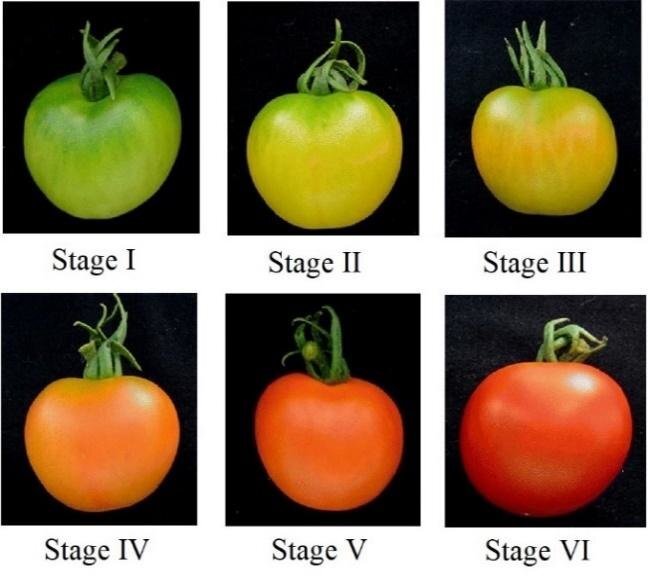
Enhancing Tomato Ripening
Pruning Tomato Plants
Pruning is a technique that involves removing certain parts of the tomato plant, such as suckers and excess foliage. Pruning helps redirect the plant’s energy towards fruit production and ripening. By removing unnecessary vegetative growth, the plant can focus its resources on developing and ripening the existing fruits. Pruning also improves air circulation and sunlight penetration, which are crucial for proper ripening.
Trimming Excess Foliage
Excessive foliage can prevent adequate sunlight penetration and airflow, hindering tomato ripening. Trimming excess foliage allows more sunlight to reach the fruit, stimulating chlorophyll production and enhancing the ripening process. However, it is important to strike a balance between foliage removal and maintaining enough leaves for photosynthesis and overall plant health.
Removing Suckers
Suckers are the small shoots that emerge from the leaf axils of tomato plants. These suckers can divert plant energy away from fruit production and ripening. Removing suckers helps channel the plant’s resources towards existing fruit development, resulting in faster and more even ripening. Regularly check for the presence of suckers and pinch them off when they are small to prevent unnecessary growth.
Providing Adequate Watering
Proper watering is essential for tomato ripening. Inconsistent watering and water stress can lead to uneven ripening and poor fruit quality. Tomatoes require a consistent and adequate water supply to support their growth and ripening. It is important to water the plants deeply, ensuring the water reaches the root zone. Mulching around the base of the plants can help retain moisture and prevent water evaporation.
Using Ripening Accelerators
Ripening accelerators are commercial products that are designed to speed up the ripening process. These products typically contain a combination of ethylene gas, auxins, and other ripening agents. By applying ripening accelerators on green or partially ripe tomatoes, you can promote faster and more uniform ripening. It is important to follow the manufacturer’s instructions regarding the application and dosage to achieve the desired results effectively.
Monitoring Ripening Progress
Regular Tomato Inspections
Regular inspections are vital to monitor the progress of tomato ripening. Check the tomatoes daily to observe any color changes or signs of overripening or decay. Inspect each tomato individually to ensure no damaged or diseased fruits are left among the ripening ones. Regular inspections allow for timely intervention and ensure that tomatoes are harvested at their optimum stage of ripeness.
Color Changes
Color changes are a reliable indicator of tomato ripeness. As tomatoes ripen, they transition from green to their characteristic ripe color, such as red, yellow, or orange, depending on the variety. Monitor the color changes closely to determine the ideal harvest time. Take into account the specific variety and its characteristic color when assessing tomato ripeness.
Texture and Firmness
Apart from color changes, the texture and firmness of tomatoes can provide valuable insights into their ripening stage. Ripe tomatoes should be firm yet slightly yielding to gentle pressure. Avoid tomatoes that are overly soft or mushy, as they may be overripe or starting to decay. Gently squeeze the tomatoes during inspections to evaluate their firmness.
Harvesting at Optimal Stage
Harvesting tomatoes at their optimal stage of ripeness is crucial to achieve the best flavor and quality. Each tomato variety and personal preference may determine the ideal harvest time. However, waiting until the tomatoes are fully ripe on the vine can risk damage or spoilage. It is advisable to harvest tomatoes when they are partially ripe, with a slight color change, and allow them to ripen off the plant using the various methods discussed earlier.
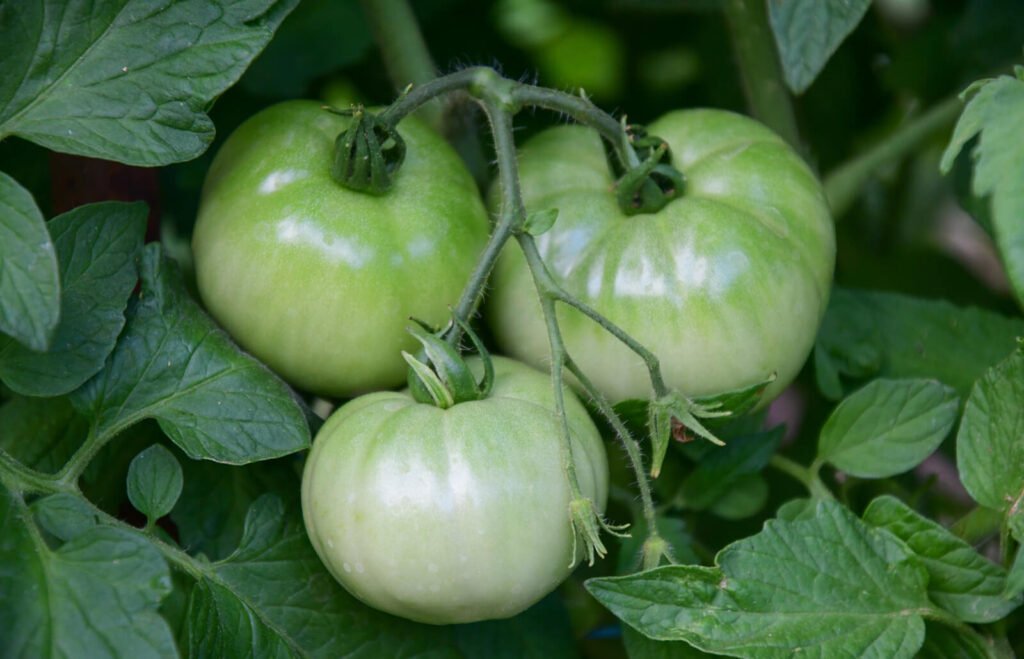
Common Ripening Issues
Uneven Ripening
Uneven ripening is a common issue that can occur with tomatoes. Factors such as fluctuating temperatures, inconsistent watering, and inadequate sunlight exposure can result in uneven ripening. To mitigate this issue, it is essential to address the underlying causes. Maintaining stable temperatures, providing consistent and adequate watering, and ensuring sufficient sunlight for all parts of the plant can help achieve more uniform ripening.
Blossom End Rot
Blossom end rot is a disorder characterized by dark and sunken spots at the bottom end of tomatoes. This condition is caused by calcium deficiency or improper calcium uptake by the plant. Blossom end rot can affect tomato ripening and quality. To prevent this issue, ensure adequate calcium availability in the soil through proper fertilization. Regular watering practices, with consistent moisture levels, are also beneficial in preventing blossom end rot.
Premature Ripening
Premature ripening refers to tomatoes ripening before reaching their full size and maturity. This issue can arise due to excessive ethylene exposure, excessive heat, or certain genetic factors. Prematurely ripened tomatoes may lack the desired flavor and texture. To mitigate this issue, monitor ethylene exposure, provide adequate shade during periods of extreme heat, and select tomato varieties that are less prone to premature ripening.
Delayed Ripening
Delayed ripening can occur when tomatoes take an extended period to reach the desired level of ripeness. Factors such as cooler temperatures, insufficient sunlight, and nutrient deficiencies can contribute to delayed ripening. To encourage timely ripening, ensure proper temperature and sunlight conditions, adequate nutrient supply, and appropriate cultural practices. Implementing the ripening methods discussed earlier can also help facilitate the ripening process.
Ripening Green Tomatoes
Determining Tomato Maturity
Determining the maturity of green tomatoes is essential when attempting to ripen them off the plant. Green tomatoes are generally close to maturity when they have reached their full size and have a glossy appearance. As the tomatoes mature, they will start to exhibit a slight color change and softer texture. Utilize the previously mentioned indicators such as size, glossiness, and texture to determine the maturity stage of green tomatoes.
Methods to Ripen Green Tomatoes
Several methods can be employed to ripen green tomatoes effectively. The room temperature ripening method discussed earlier can be used for green tomatoes as well. Additionally, the paper bag method can effectively trap the ethylene gas released by green tomatoes, promoting ripening. Another method is placing the green tomatoes in a container with a ripe banana or apple, as the ethylene gas emitted by these fruits will stimulate ripening. Monitor the progress closely to prevent overripening.
Recipe Ideas for Green Tomatoes
Green tomatoes can be harvested and enjoyed in various culinary preparations. One popular dish is fried green tomatoes, which involves coating the sliced green tomatoes in a seasoned batter and frying them until golden and crispy. Green tomatoes can also be used in salads, salsas, or pickled for a tangy addition to sandwiches and burgers. Experimenting with different recipes can highlight the unique taste and texture of green tomatoes.
Preserving Green Tomatoes
If a large harvest of green tomatoes cannot be ripened before they start to spoil, preserving them can be a viable option. Green tomatoes can be pickled by immersing them in a vinegar-based brine along with spices and herbs. Green tomatoes can also be sliced and frozen for later use in recipes that call for cooked tomatoes. Properly stored and preserved, green tomatoes can provide a flavorful addition to meals throughout the year.
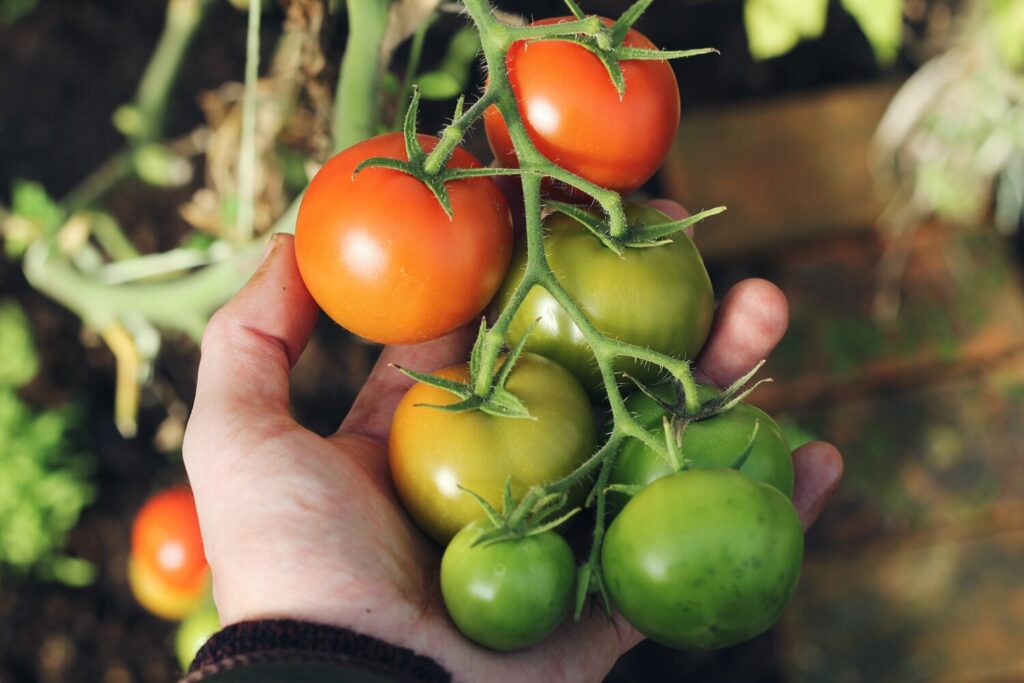
Tips and Precautions
Avoiding Bruising and Damage
When handling tomatoes, it is crucial to exercise caution to avoid bruising or damaging the fruit. Use care when harvesting tomatoes, ensuring that sharp and clean tools are used to minimize injury to the plant and fruit. Avoid dropping or throwing tomatoes, as this can result in bruising. Gentle handling and storing the tomatoes in a soft surface, such as newspaper or a towel, can help prevent damage during ripening.
Maintaining Proper Hygiene
Maintaining proper cleanliness and hygiene is essential when handling tomatoes to prevent the spread of diseases and potential spoilage. Wash your hands thoroughly before handling tomatoes to minimize the transfer of contaminants. Additionally, ensure that any equipment or containers used for harvesting, storing, or ripening tomatoes are clean and sanitized regularly. Proper hygiene practices help maintain the quality and safety of tomatoes.
Using Soft Surfaces for Ripening
When ripening tomatoes off the plant, it is advisable to utilize soft surfaces to cushion the fruit. Placing tomatoes on a soft surface, such as newspaper or a towel, minimizes the risk of bruising or damage. Soft surfaces also absorb excess moisture, preventing the buildup of moisture and potential rot. Regularly monitor the soft surfaces for any signs of excessive moisture or decay and replace them as needed.
Monitoring Ethylene Exposure
While ethylene is beneficial for ripening tomatoes, excessive exposure to ethylene can lead to overripening or decay. When employing methods that utilize ethylene, such as ripening with ripening bananas or using ethylene gas, it is important to monitor the tomatoes closely. Regularly check the tomatoes for signs of overripening or decay, and adjust the ripening conditions as necessary to ensure optimal ripeness without compromising the quality.
Considering Tomato Size
The size of tomatoes can affect their ripening time and quality. Smaller tomatoes generally ripen faster compared to larger ones. When harvesting or storing tomatoes of different sizes, it is important to consider the varying ripening rates and adjust the ripening conditions accordingly. By monitoring each tomato individually and taking into account their size, you can ensure that all tomatoes ripen at their own optimal pace.
Conclusion
Understanding the factors that affect tomato ripening is crucial for achieving flavorful and quality tomatoes. Temperature, ethylene production, sunlight exposure, humidity levels, and nutrient availability all play significant roles in the ripening process. Harvesting tomatoes at the appropriate ripeness stage and employing various ripening methods, such as room temperature ripening, using paper bags, or introducing ethylene, can facilitate the ripening of tomatoes off the plant. Proper storage techniques, including refrigeration, shade, ventilation, and the use of ripening trays, help maintain the freshness and quality of ripe tomatoes. By carefully monitoring the ripening progress and addressing any ripening issues, such as uneven ripening or blossom end rot, you can ensure a successful tomato harvest. Whether ripening green tomatoes or enjoying the flavors of fully ripe ones, following recommended tips and precautions will help preserve the integrity and taste of tomatoes. With proper knowledge and practices, you can savor the deliciousness of perfectly ripened tomatoes straight from your garden or local market.
